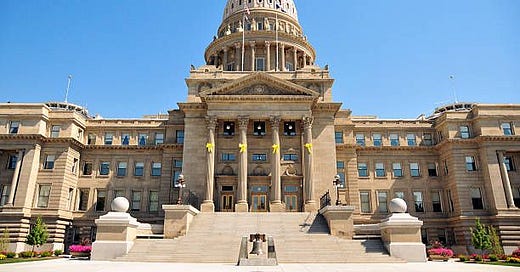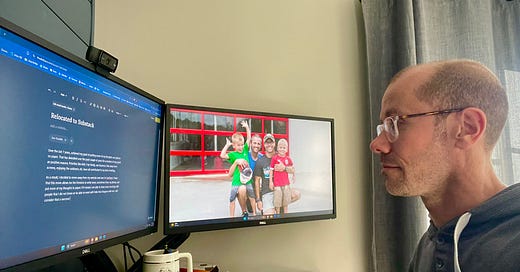
The Fall of Diversity, Equity, and Inclusion (DEI) programs from the perspective of an HR Professional
DEI programs have long been under scrutiny, mostly due to merit-based hiring concerns. The failures offer lessons on whether they are necessary or how to do it better.

In the United States, Federal law prohibits discrimination in employment based on several protected classes, which include race, color, religion, sex, pregnancy status, national origin, age (for individuals >40), disability, and genetic information. These protections apply generally to employers with at least 15 employees, though this can vary. Many states and local governments have laws that may extend protections to additional categories like marital status, military or veteran status, political affiliation, sexual orientation, and gender identity. While these characteristics are protected, there are nuances and exceptions where business decisions might not be deemed discriminatory if they serve legitimate business interests. If laws already exist that prevent employers from terminating an individual’s employment because they fall into one of the “protected classes,” why would company’s need to advocate to hire more individuals that fall into a protected class?
As a professional that’s spent many years navigating the complex and changing landscape of multiple industry workplaces and workforces, I've seen the rise of, the aspirations, and challenges of Diversity, Equity and Inclusion (DEI) initiatives at mostly larger companies. I believe DEI programs were designed with noble intentions—to foster environments where every individual feels valued, heard, and empowered. However, as we delve deeper into the practical implications, it's critical to address the consequences that undermine their effectiveness, including the impact on merit-based hiring practices, and how a good idea went horrible wrong.
… training rarely changes actual behaviors and has little impact on explicit biases. A meta-analysis of hundreds of prejudice-reduction interventions found few that unambiguously achieved their goals. Many popular interventions run the risk of backlash, strong adverse reactions that sustain or even worsen the inequity that practitioners attempt to eliminate. Even “the business case for diversity,” a decades-old rhetorical framing and justification for DEI work, has been found to backfire on marginalized groups’ feelings of belonging and weaken support for diversity programs when organizational performance drops.
The Ideal vs. The Reality
Initial Promise: DEI programs started with the promise of leveling the playing field, promoting fairness, and enriching corporate culture with diverse perspectives. The vision was clear: a workplace where meritocracy (a system where power, leadership, and economic rewards are distributed based on individual talent, effort, and achievement) thrives, biases are minimized, and equal opportunity is a reality.
Failures
Lack of Merit-Based Hires:
The most contentious issue is the perception that DEI initiatives lead to hiring based more on diversity metrics than on merit (skills, qualifications, experience). When DEI is applied universally to all jobs within an organization, this can result in qualified candidates being overlooked if they do not meet certain diversity criteria, potentially undermining the principle of meritocracy. This leads to mass inefficiencies if the best person for the job isn't chosen, regardless of their background. Do you want the best doctor to operate on you or the one that checked a box? Same thing goes for your HVAC technician, financial advisor, etc.
“Tokenism” Over True Inclusion
Many organizations have fallen into the trap of tokenism, where diversity quotas are met without genuine efforts towards inclusion. This superficial approach can lead to minorities being placed in roles where they are not fully supported or qualified, leading to higher turnover rates, dissatisfaction, and lower job performance.
Backlash and Polarization:
Instead of uniting the workforce, many DEI initiatives have inadvertently created divisions. When not implemented with sensitivity to all groups, these programs can lead to resentment among employees who feel their achievements are being overlooked due to an overemphasis on diversity metrics (aka hiring “the right people”).
Compliance Over Culture:
Compliance with DEI policies often overshadows the creation of a cultural shift. The emphasis becomes on meeting minimum requirements rather than fostering an environment where diversity naturally leads to innovation and collaboration.
Inadequate Training and Follow-Through:
Training sessions on unconscious bias or cultural competence are common, yet without continuous education, accountability, and leadership support, these can become one-off events that waste employee time rather than part of an ongoing cultural transformation.
Measurement Challenges:
Quantifying the success of DEI initiatives is complex. While diversity numbers might increase, measuring equity and inclusion is more nuanced, leading to scenarios where companies claim success based on easily measurable metrics while ignoring deeper cultural issues.
My unCommon Sense
Many Human Resources Associations promote that all HR professionals should encourage DEI programs across all companies regarding of existing considerations, industries, or other valuable criteria. I do NOT agree with that blanket idea. From my perspective, the path to truly successful DEI programs involves focusing on Culture Development vs simply DEI through the following:
Company Cultural Integration: It must be woven into the very fabric of the culture, not just new policies, training, or initiatives. This requires leadership commitment at all levels.
Honest Engagement: Engage employees in the process, making them part of the solution. Feedback mechanisms should be open and acted upon, ensuring that open expression is encouraged, and just not a top-down mandate.
Beyond Numbers: While a company’s workforce should be representative of the area(s) it operates or its customers, the focus should shift towards the quality of workplace interactions, career progression for all, and the decision-making processes. Merit should remain a central criterion in hiring and advancement, complemented by looking at your community and then looking at your workforce. Does your workforce look like your community?
Leadership Development: Promote leaders who embody the company’s culture, business practices, and understand that leadership plays a pivotal role in either the success or failure any initiative, including those focused on a more diverse workforce. They must advocate for and ensure that merit-based criteria are not overlooked in the pursuit of diversity.
While the rollback or failure of DEI programs, including the concerns over merit-based hiring, may upset many in the HR world, they offer us lessons on if they are necessary or how to do better. As HR professionals, our role isn't just to implement these programs but to critically evaluate, adapt, and champion a workplace where diversity, equity, and inclusion are not promoted through classes or programs, they are lived realities, balanced with meritocratic principles. This requires a deep commitment to understanding and addressing the complexities of creating a culture, if the culture is one that needs DEI to better serve its customers.
Professionally, I work primarily with commercial services company’s to identify and achieve their organizational goals, then prepare for if/how those goals will affect their human capital (aka their employees).
If you want to learn more, you can reach me at dan@frontporchadvisers.com.
If you want to chat about your thoughts on this topic, please send me an email dan@frontporchadvisers.com or drop me a message using the button below. Would love to meet for coffee, a beer, or a virtual conversation.
Have a good one,
Dan











So you think Pete Hegseth's promotion to the Secretary of Defense is merit-based? or based on his alliance with the look, thoughts, and doing the will of the current administration? Two organizations ousted him over his pillaging of the two Veteran organizations and is a TV presenter who led a platoon in his highest-ranking position? He is the OG DEI hire.
"As HR professionals, our role isn't just to implement these programs but to critically evaluate, adapt, and champion a workplace where diversity, equity, and inclusion are not promoted through classes or programs, they are lived realities, balanced with meritocratic principles."